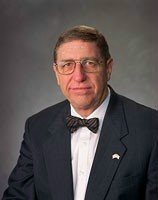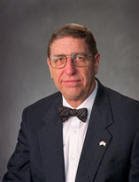International Trade Shifts – implications and possibilities for strategic investment (buckle up – this will take some concentration and it may change your view of the world)
Preamble:
Among the presentations at the BOMA International 100th Anniversary Celebration in NYC was one from James Reeb, a consultant at Cushman and Wakefield who teaches at Penn State and the University of Pennsylvania, on “The New Age of Trade: Globalism and Industrial Real Estate” – an odd topic for an audience of office building owners and managers. It turned out to be an inspired choice:
The Pivotal Concept – get this and the rest will be easier to understand:
The most startling statement made by the presenter (and the one which galvanized my attention) was that in the world of goods and services real estate is no longer a driver – other costs, such as the costs of labor and distribution, have succeeded real estate as the principal drivers. Real estate is now mostly a tactical decision – not a strategic one.
Ergo: The Golden Age of Real Estate is over:
This means the golden age of real estate (build it and they will come) is over with few exceptions. Cities have been left littered with building detritus being picked over by landlords who scrabble for any tenant available in the last few decades – we have all observed this but stay tuned to better understand it. The malaise that results from downgraded real estate use has been blamed on suburbanization and perimeter malls but it now turns out the underlying causes are systemic and global and happening at an accelerating pace.
Not that this cannot be remediated locally to some extent. Sometimes inspiration strikes and adaptive building re-use can bring about successful transformations – usually at lower economic value than the prior use. But these efforts at adaptive re-use usually fail if they are not accompanied by shared vision between the city and the landlords. An example of where this succeeded is the transformation of the sewing lofts near the docks in New York City now converted to the “Gallery District” successfully. The city provided the signage and zoning to encourage the transformation – but few cities have the scale to pull this off and while it commands lots of local attention it is a side show in the larger context – fighting over a shrinking pie is less satisfying then opening a new bakery!
So, in a world moving at the pace of the Internet, which changes are useful to watch and anticipate if a city is to prosper? Put another way, how can the impact of disintermediation be minimized and reintermediation be seamlessly introduced?
First, to have meaningful dialogue, everyone involved must be retrained to think in terms of the new drivers. For example the cost of a leasing a building should no longer be measured in traditional dollars per square foot. A warehouse, for example, should be measured in cents per pallet position (including the costs of putting the pallet in position, storing it and pulling it for redeployment) not in dollars per square foot of floor area. Looked at this way a building with a cost of $5 per square foot can lose a tenant to a building costing $10 per square foot if the pallet positioning costs are less in the more costly building. You cannot make useful decisions as a developer, owner or a city using the old measuring tapes. It is like measuring in “cubits” when the world uses “meters” – the translation takes too long and the translation is actually more complicated than this analogy.
Thinking “Over the Horizon”:
Sticking with warehousing let’s look over the historical horizon of local and regional real estate markets to see the context in which the decision to rent a “warehouse” building is made today.
First, it is useful to think in terms of continents when considering an overview of goods and services. The best preparation for this is Google Earth. The breathtaking first view of Google Earth is as an observer from space “flying” down to a location, passing over continents and seas to hover over your desired destination.
Using the same “fly over” method in your mind’s eye to view today’s world of economic geography and looking at continents in terms of the level playing field of buying power and not currency (expressed for convenience in USD) North America has 14 Trillion in purchasing power, 24 “European” states also have 14 Trillion in purchasing power and China and India combined have 14 Trillion in purchasing power as well but Asia has significantly more when Japan and city states like Singapore are included.
So the tipping point has already been passed. The world is now officially “Asian” in terms of purchasing power without regard to the vestigial thrashings of the US as a “Superpower” or Europe’s aspirations of regained influence. It is no longer a matter of “when” but “what now?”
First, the impact of having passed the tipping point is that Asia has started changing from a producing area to a consuming area and this is reflected in wages. In Shanghai China wages went up 17.8% last year in real terms – put in North American perspective that would be like raising the average salary from $30,000 to $35,340 in one year! The resulting purchasing power means European boutiques like Versace and Gucci are closing New York stores and opening multiple Asian stores because this is where the profits are.
Labor Shortages determine where components are made:
Asia is running into labor shortages – no matter how surprising this discovery may be. At first China spilled over into Viet Nam and Indonesia looking for low cost (trained and skilled) labor. They soaked up this labor early in the current decade. Now Indian entrepreneurs are going to Africa to open factories and their contracts are coming from China. China is essentially outsourcing to Africa using Indian intermediaries. The pace of this outsourcing to Africa is expected to increase and the biggest change in Africa will not come from Foreign Aid but from training of the labor force by Indian entrepreneurs looking for profits.
This puts the Middle East in perspective doesn’t it? In fact it explains places like Darfur differently and one looks longingly at much of the Palestinian labor force that is going to waste. But let’s stick to the subject and that is the impact of these changes in the distribution of goods and services. For those interested, read “Workforce Crisis” by Ken Dychtwald for a more detailed treatment.
The new shipping paradyne will open new infrastructure investment opportunity:
You need to know one more geo-economic fact before I move on (still with me?). That is that the new Panama Canal is nearing completion and it is as well positioned today to change the world for the transportation of goods as it was 100 years ago when it first opened. Today 5% of the goods of the world pass through the canal but this is about to radically change in two ways:
- Today goods and parts are packaged in “boxes” and an island is being built off shore in Panama to rationalize the sequencing of these boxes to make final distribution to integrators and final markets in other parts of the world more efficient. “Boxing” when combined with RFID (Radio Frequency Identification) tags make it possible to do enroute what used to be done in warehouses at destinations.
- The big shipping containers we have all seen (called TEU’s for "Twenty-foot Equivalent Unit") are becoming more sophisticated and at destination points you need storage for between 3 – 4 TEU’s per warehouse door because they are now an integral part of the supply chain. Read “The Box: How the Shipping Container Made the World Smaller and the World Economy Bigger” by Marc Levinson for a more detailed treatment.
It will also help you to know that when the canal opens the time in transit from Asia to the densely populated East Coast of the US will be the same by sea or West Coast port and rail. 23 days either way but the cost by sea is less and the contention of rail car availability is avoided.
Mexico and Canada will be big winners:
So where will all these parts made worldwide head in a time when sustainability and carbon footprint dictates that the finishing of goods be near their final destination but labor efficiency is a consideration? The answer is Mexico and Canada.
Mexico for the final integration of parts for consumer goods because it has low cost labor and is strategically between Asia and Africa where parts will come from and is poised on the southern border of the US for easy transportation by truck and rail. Canada will serve the same purpose for business goods that will make use of Russian and Eastern European skilled labor combined with electronics from Asia – Canada is poised on the northern border sandwiching US consumers and businesses who, it turns out have a labor shortage of their own (possibly to be exacerbated by choking off illegal worker entry) and will not be likely to object to this arrangement. These components for integration will be best shipped down the St Lawrence River to ports like Toronto where high skill labor is still available at better rates than US labor and where technology is more quickly adopted than in the US.
Not only Toronto but Hamilton and Windsor will be affected. These cities will see million square foot integration facilities built but the contention of large ports combined with better sequencing make regional cities like Kingston, Ontario excellent locations for 250,000 sq ft purpose built integration, sequencing and value add facilities. Kingston, if it takes up the opportunity, could return to its roots as the historic shipping, consolidation, integration and sequencing railhead associated with river and barge traffic from the St Lawrence River a hundred years ago.
By “purpose built” I mean 300 foot clear span facilities with multiple story height close to appropriate labor pools of people willing to work for $11-$12 an hour on shift work – 70% woman.
A 250,000 foot facility would be best built near a brownfield site where drop containers can be stored like cars in a valet parking lot, near rail, highway and it wouldn’t hurt to be near a small container port. Most existing space in places like Kingston cannot be made to work for the new requirements – trying is a waste of time.
I am going to end here for now but by shifting context to intellectual labor similar changes are afoot for other property types such as office buildings. I will get to these in future blog entry.

